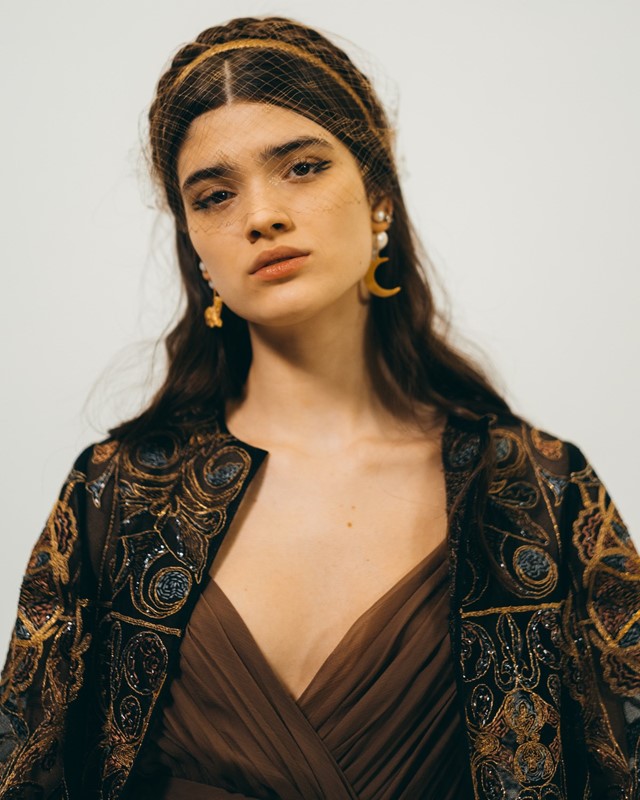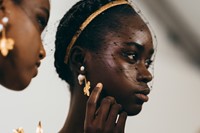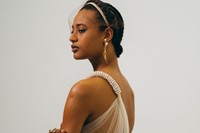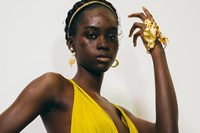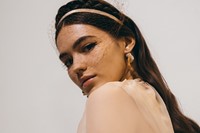Maria Grazia Chiuri’s Spring/Summer 2020 haute couture collection for Dior represents her most prolific collaboration with a female artist yet
“What if women ruled the world?” So posed American artist Judy Chicago at Dior’s latest haute couture presentation in Paris yesterday, via a vast hand-appliquéd banner which hung at the end of the carpeted runway. More banners lined the space – a purposely womb-like structure erected in the grounds of the city’s Rodin Museum – richly coloured and each asking a question, ranging from “Would both men and women be gentle?” to “Would God be a woman?” They had been hand-stitched by female students from the Chanakya School of Craft in Mumbai, India; together, the banners, and indeed the temple-like space itself, was an installation by Chicago, titled The Female Divine.
So set the scene for Maria Grazia Chiuri’s Spring/Summer 2020 haute couture collection for Dior, and her most prolific collaboration with a female artist yet (befitting this, the showspace will remain open as an exhibition to the public after the show). Chiuri encountered Chicago through the latter’s mid-70s installation The Dinner Party – now permanently housed at the Brooklyn Museum – a ceremonial banquet in which each of the elaborate place settings is inscribed with an important woman from history, from Virginia Woolf to Sappho. The work would make her a founding member of the then-fledgling feminist art movement; previously, in 1971, she had founded the first-ever feminist art programme at California State University. Chiuri said she was fascinated by Chicago’s longtime exploration of the relationship between creativity and femininity (in the collection notes, the now-octogenarian artist is described as “revivor of a triumphant, divine conception of femininity, mistress of her destiny”).
It was in this spirit that Chiuri formulated this, which had begun to gestate six months earlier when Chicago had attended last season’s haute couture show (and had purportedly been impressed by the flat shoes). The two women had talked about matriarchal societies and pagan goddesses; Chiuri had been reminded of works featuring the Ancient Greek goddess Athena, of which there were a proliferance in her native Italy from the Renaissance era (she had thought of Sandro Botticelli’s Primavera and the ancient Winged Victory of Samothrace in the Louvre, both seeming to capture the “neo-platonic allegory of beauty” Athena encompasses). The classical Greco-Roman era – and its various interpretations – seemed particularly fertile ground for Chiuri’s ongoing exploration of femininity – it was, after all, a time when women were gods.
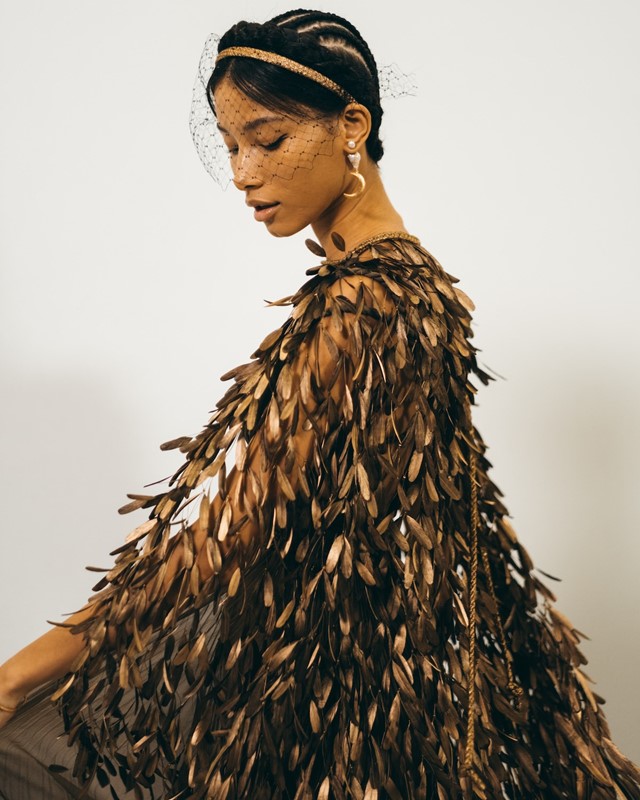
It drew Chiuri towards the peplos, the draped tunic worn by women in Ancient Greece. Here, it was reinterpreted as plissé evening dresses; or tailoring which twisted at the waist, or across the chest, gently following the line of the body. A similiar sense of fluidity was evoked in simple asymmetric column gowns, held at the waist with braided rope, or in the layers of translucent chiffon, revealing delicate lace underwear beneath. Colours spanned powdery pastels to vermilion red, though it was gold which drew the collection together: whether the glimmering tassel gown which opened the collection, or the various iterations of the bar jacket. It was a beautiful collection, perhaps Chiuri’s most effortless yet.
But more than that, it became part of Chiuri’s ongoing dialogue about womanhood itself, her constant untangling of the differences between feminism and feminity; beauty and power. And what better guide than the fearless Chicago? This has been her territory for decades. In fact, she had first dreamt up the idea for The Female Divine over 40 years earlier, but never had the means to make it reality. “They offered this immense workforce and all the resources of Dior,” Chicago said. “And I was able to bring my desire to honour women to a global scale at a level I never could have dreamed of. It was the greatest creative opportunity of my life.”
